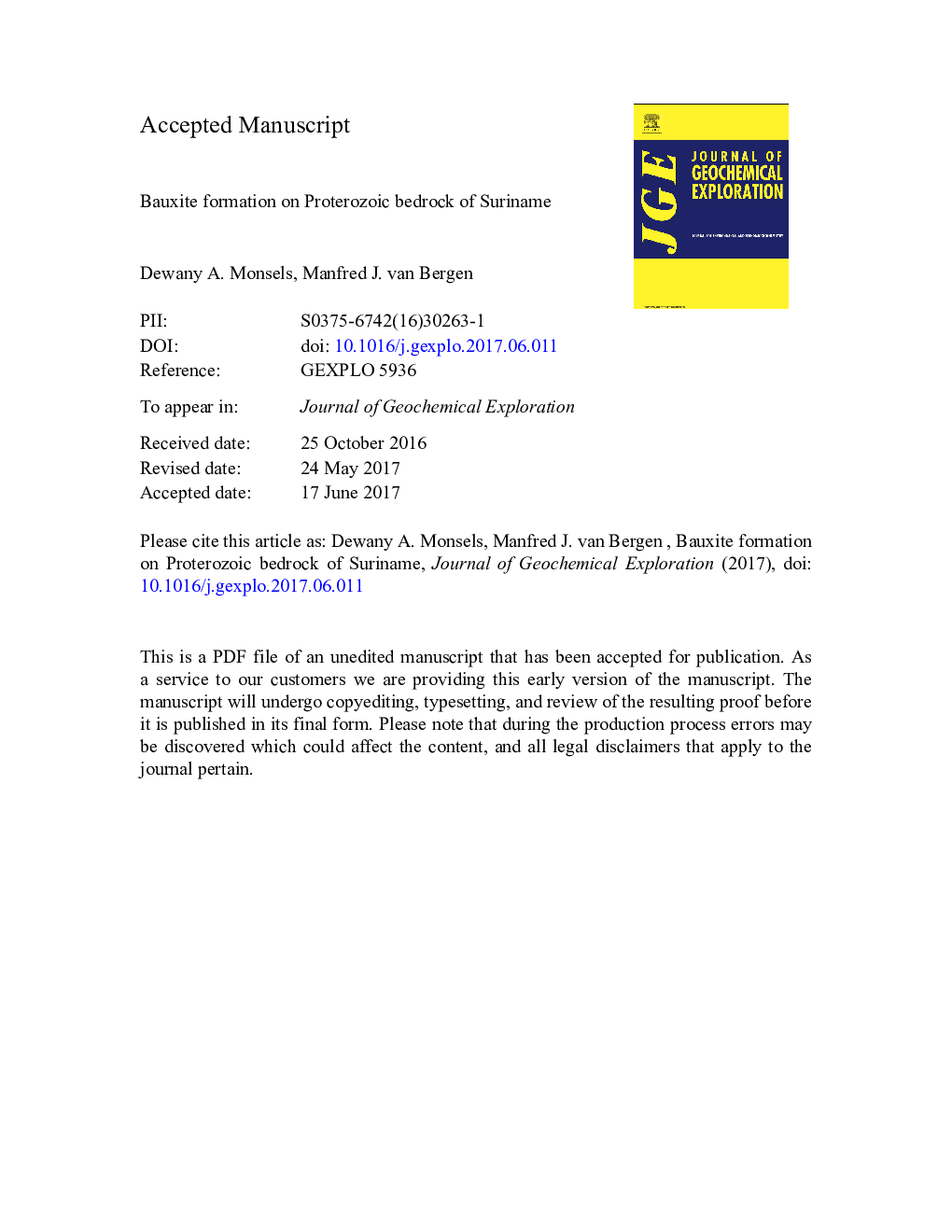| کد مقاله | کد نشریه | سال انتشار | مقاله انگلیسی | نسخه تمام متن |
|---|---|---|---|---|
| 5754425 | 1620879 | 2017 | 47 صفحه PDF | دانلود رایگان |
عنوان انگلیسی مقاله ISI
Bauxite formation on Proterozoic bedrock of Suriname
ترجمه فارسی عنوان
شکل گیری بوکسیت در زیر زمین پروتروزیوئیک سورینام
دانلود مقاله + سفارش ترجمه
دانلود مقاله ISI انگلیسی
رایگان برای ایرانیان
کلمات کلیدی
موضوعات مرتبط
مهندسی و علوم پایه
علوم زمین و سیارات
زمین شناسی اقتصادی
چکیده انگلیسی
Lateritic bauxite deposits in Suriname rest on a variety of metamorphic, igneous and sedimentary parent rocks. Remnants of multiple planation surfaces with duricrusts that mark the tropical landscape are associated with recurrent episodes of bauxite formation since Late Cretaceous times. Plateau-type bauxites at the highest topographic levels developed on a range of Proterozoic crystalline bedrocks on the northern edge of the Guiana Shield in the country's interior. Weathering profiles of the Bakhuis Mountains, Nassau Mountains, Lely Mountains and Brownsberg largely correspond to the classical sequence of an iron-rich cap on top of a bauxite layer that covers a clay-rich saprolite interval grading into weathered and fresh bedrock. All of the investigated profiles are consistent with in-situ formation of the bauxite and are marked by Si-Al-Fe relationships indicative of medium to strong lateritization, with fresh bedrock being poorly exposed. The bauxite deposits contain gibbsite as the dominant Al-bearing phase, whereas boehmite is locally present in subordinate quantities. Their ferruginous character is expressed by relatively abundant goethite and hematite in the top layers. Kaolinite is the main mineral in the saprolite. Anatase and zircon are the most detected minor phases. The investigated bauxite deposits are generally of a medium-grade (average Al2O3 contents 33-49 wt%) but have variable chemical compositions according to exploration drilling results. Average Fe2O3 contents (13-34 wt%) show inverse relationships with Al2O3. Despite this overall conformity of the deposits, their thicknesses, textures, mineralogy and geochemistry are distinct in detail, reflecting contrasts in the nature of the parent rock and weathering history. Inter-element relationships show conspicuous differences between SiO2-poor (< 5 wt%) upper parts and SiO2-richer (> 5 wt%) lower parts of profiles in the Bakhuis Mountains, which developed on high-grade metamorphic pyroxene amphibolites and gneissic granulites. The bauxites of the Nassau Mountains and the other areas in eastern Suriname are marked by higher TiO2 contents (average > 3.9 wt%) and dissimilar profiles that reflect their development on variety of a low-grade metamorphic volcanic parent rocks. Weathering-induced redistribution of rare-earth and other trace elements affected even the least mobile elements. Differences in distribution patterns between individual profiles can be attributed to a combination of primary compositional differences of parent rocks, the nature and content of accessory mineral phases, and unequal responses to multiple bauxitization cycles.
ناشر
Database: Elsevier - ScienceDirect (ساینس دایرکت)
Journal: Journal of Geochemical Exploration - Volume 180, September 2017, Pages 71-90
Journal: Journal of Geochemical Exploration - Volume 180, September 2017, Pages 71-90
نویسندگان
Dewany A. Monsels, Manfred J. van Bergen,
